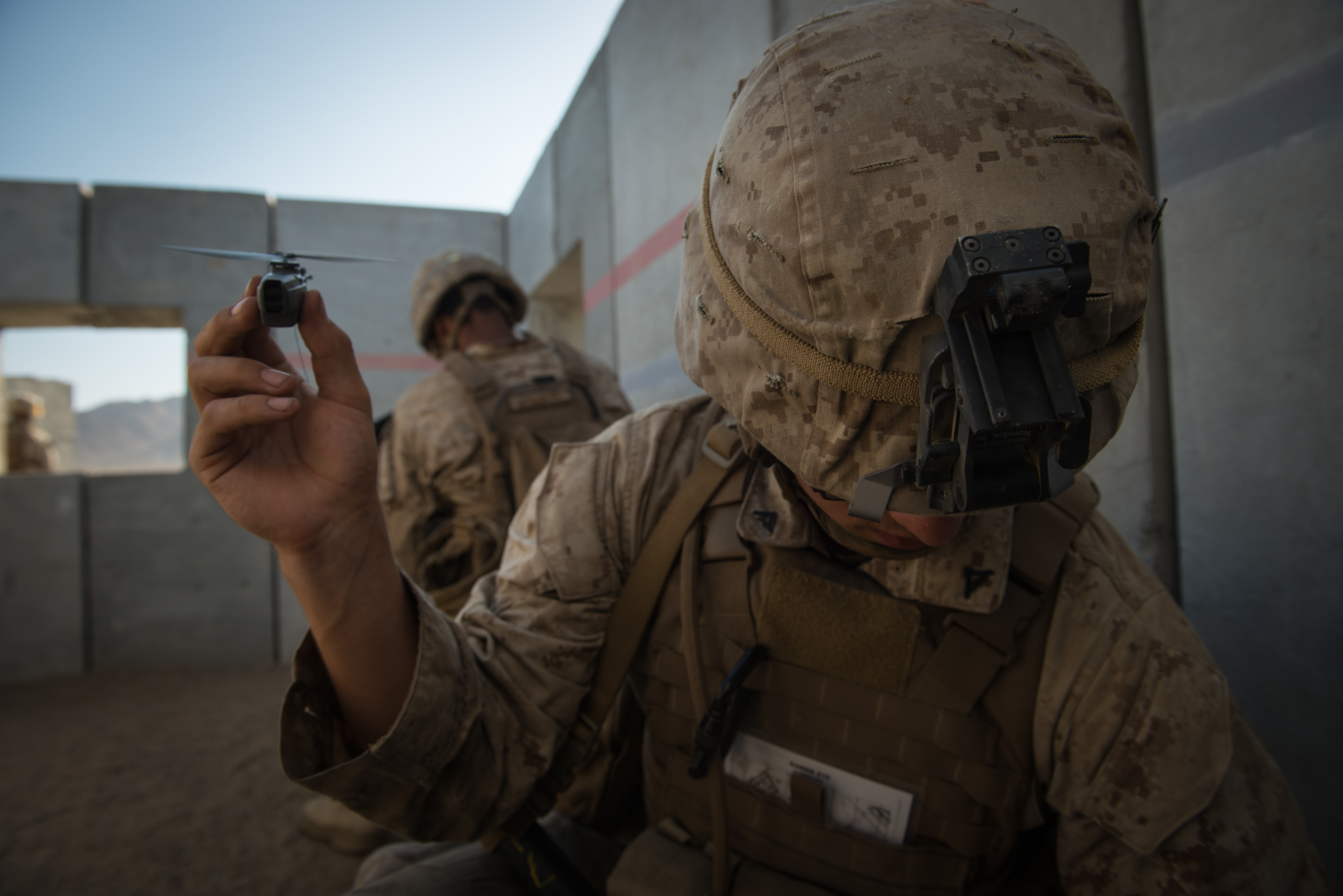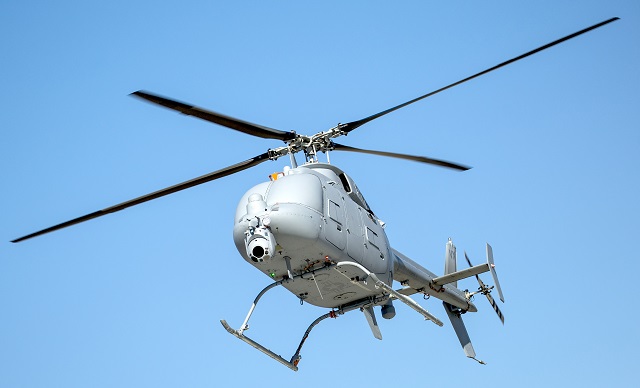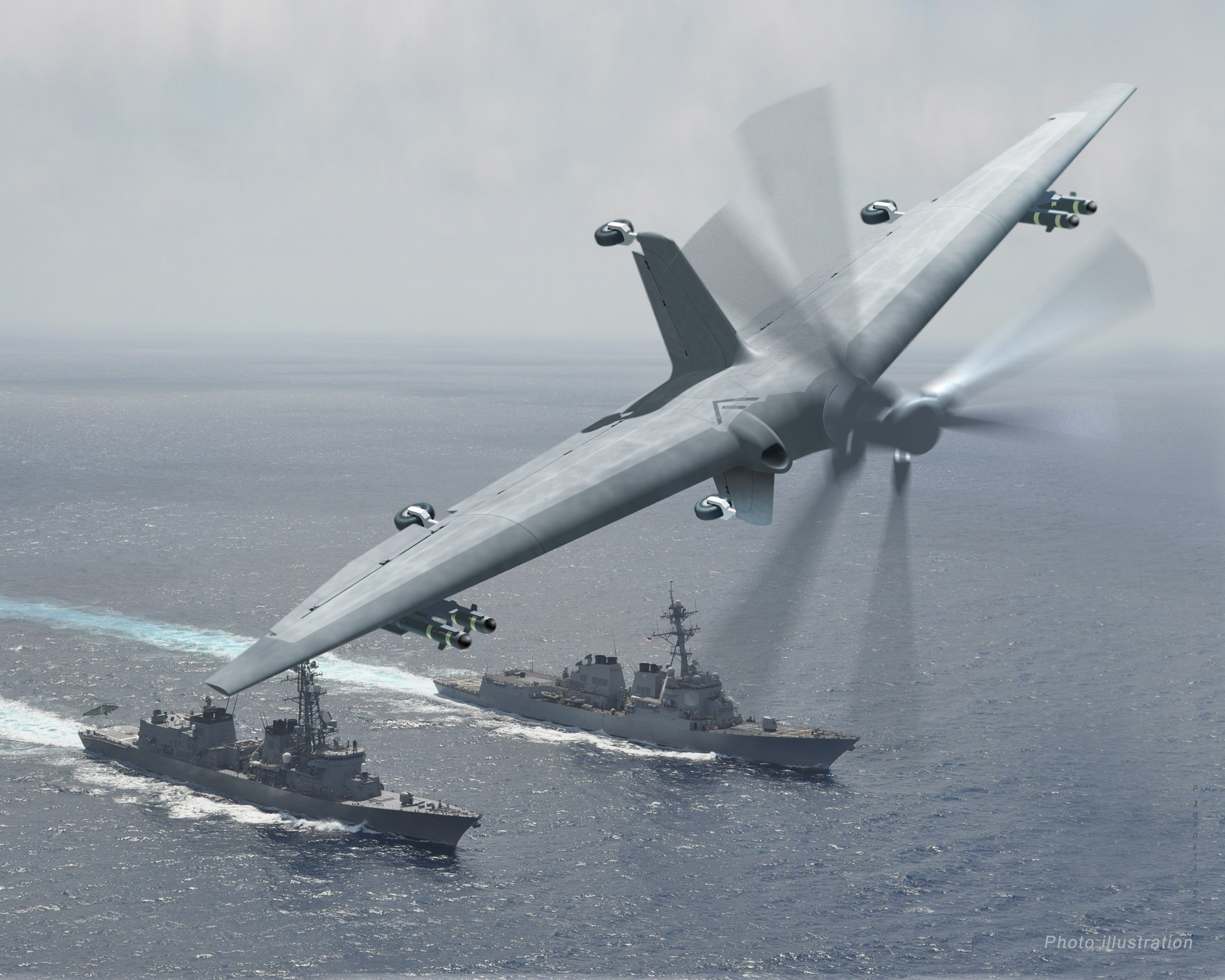
SAN DIEGO, Calif. — The Marine Corps is moving ahead quickly on equipping its infantry squads with the latest technologies, including small quadcopter drones that will help build their situational awareness on the battlefield.
That acquisition happened at lightning speed in large part to the support from the top Marine, Gen. Robert Neller, who at the WEST 2016 conference announced his plan for an infantry battalion to serve as an experimental platform for several dozen types of high-tech gear. The commandant has implored Marines to innovate, with an eye on shaping a more ready and lethal future force against more-capable enemies.
Fast forward to today, and the Marine Corps is moving ahead to outfit units with some of those field-tested equipment, including the quadcopters for its squads of infantry Marines, according to Defense One, which reported the service’s Tuesday announcement at the AUVSI Unmanned Systems conference in National Harbor, Md. The quadcopters have been among other drones and gear that have received favorable reviews from the Marines in the experiment, which ran the course of pre-deployment training and a scheduled unit rotation deployment to Japan.[]
Word of the quadcopters’ fielding was on the minds of a Wednesday panel at WEST 2018, a conference co-hosted by the U.S. Naval Institute and AFCEA, that explored how unmanned operations – such as the Navy’s MQ-8 Fire Scout unmanned, autonomous helicopter – changes the way the Navy employs rotary-wing aircraft.
Col. Che Bolden, a veteran F/A-18D Hornet weapons and sensors officer, said the military services “are defined by the capabilities it brings to the nation,” and that’s tied to each service’s operating concept.
Systems commands “need to get more in tune and think with the operating concept, otherwise we’re going to continue to have this lag in that technology,” said Bolden, currently assistant chief of staff for modernization and development with Marine Corps Installations Command. “Maybe the lesson for us putting the quadcopter out there is, we kind of forced the (Marine Corps) Systems Command into a position where they weren’t technically very comfortable with what we’re doing… but that was driven by the fact that we have an operational requirement and the pressure from senior leadership was placed on it.”
The panel moderator, author and analyst August Cole, noted that Neller has expressed interest in buying platforms used by other services, potentially accelerating the time it takes to those technologies into the hands of Marines. Bolden agreed, noting the commandant’s goal “is going to accelerate the process.”
Not everyone on the panel agreed faster is just better.
“You’ve got to get the requirements right, first. You have to understand the capability gap that exists, and what the capability requirements are,” Cmdr. Edward Johnson, the MQ-8 Fire Scout requirements officer, told the audience.
“Once you’ve got that nailed down, I think it helps to find the competitive space for the alternate materiel solution or non-materiel solution.”

“But watching what the other services are doing in terms of development I think are very important, because once you get those capability gaps or capability requirements right and you head into the portion of acquisition where you are making a materiel development decision, and you are doing an analysis of alternatives, you have more mature systems from which to run that analysis of alternatives,” Johnson said. “I think you come up with a family of solutions… that can then go faster through that development process, because they’ve already moved along.”
Johnson cited as an example the prototype unmanned aerial vehicle TERN, a Defense Advanced Research Projects Agency program that’s aimed at tackling vertical lift off of a small ship. If it’s chosen as the materiel solution, “we’re that much further along in the developmental process. That’s how you speed it up,” he said. “But you can’t short-change the first part of the acquisition process, which is studying the problem and understanding the capability gaps, in the context of the threat in the timeframe that you’re looking at. If you short-change that, and you jump to a materiel solution without understanding the requirements, then you’re asking for a disaster.”
Bolden disagreed that’s always the case. “That process is incompatible with the technology we’re talking about. It moves so fast that the typical requirements process we went through (with) the F-18… is incompatible with what we are trying to accomplish right now,” he said. “We don’t have the decision space to wait for a 10- to 12-year development cycle to go through.”

“With the standard requirements process just to get to an (initial capabilities document), that requirement is already out of date,” he said. “We need to look at it as what is it that we need it to be able to do, and that requirement is here today and gone tomorrow because the operating environment changes so quickly.”
Graham Drozeski, DARPA’s TERN project program manager, saw it a bit differently.
Drozeksi said his job is to come up with not a requirement but “a desirement in the term of months, roll the dice and try to force hard decisions… and see if the continued investment works.”
“I think that formula can bear fruit if there is close coordination between the guy that wants to build it and the service that will eventually use it,” he said. “We are going to, hopefully, burn down the technical risk and show you .. if you can do those things you’re dreaming about and those two activities concurrently does buy years off… of putting the platform in the hands of warfighters.”
Johnson noted that the requirements generation process goes “as fast as you get” flag officer’s attention. It can take two years, and the busy activities of Washington makes it difficult “to nail down real decision-maker time and get these documents in front of them,” he said. “That process can go as fast as you need it to go. Technically, it should take less than six months.” Delays can come from “rice-bowl guarding,” among others, he added, noting that “the development process beyond that, that’s the hard part.”
He warned: “I feel like we short-change that process at our peril.”
Either way, as some warfighters are quick to note, the enemy has a say. Cole noted “there’s the aspirational development along DARPA’s lines, and there’s the coercive, which is what the adversary does. That is also going to have a large impact in, ideally, how fast we feel like we feel like we need to be.”





